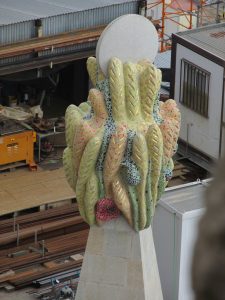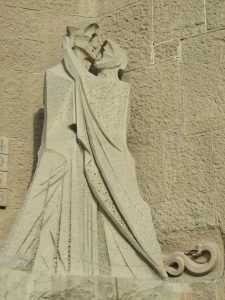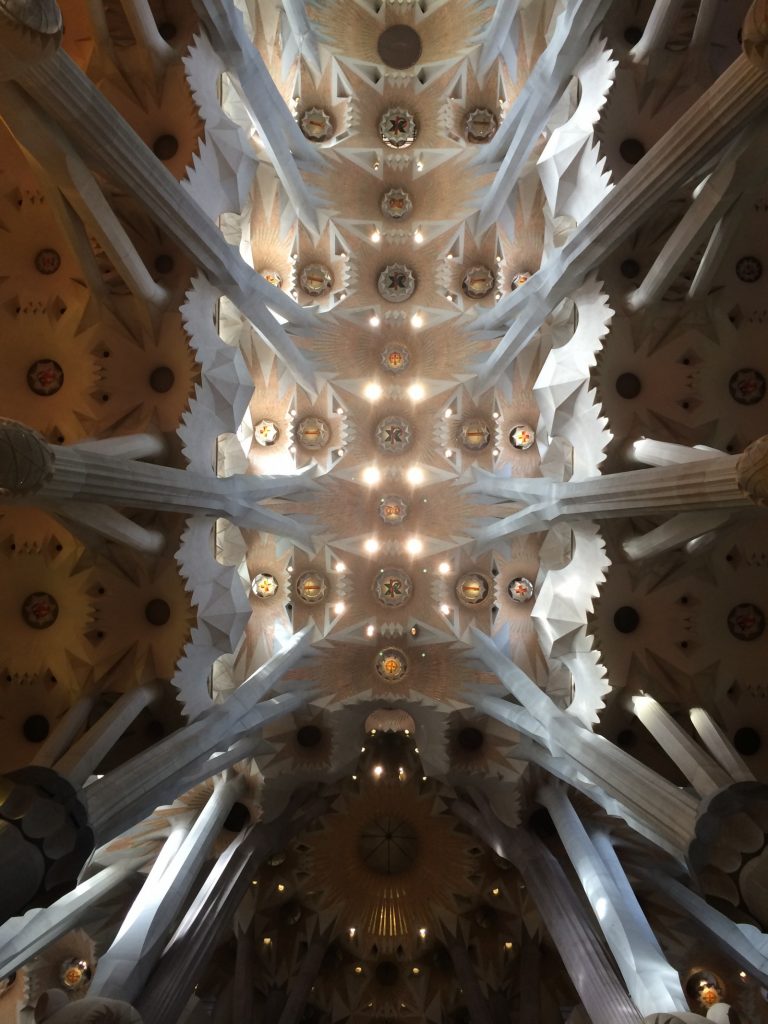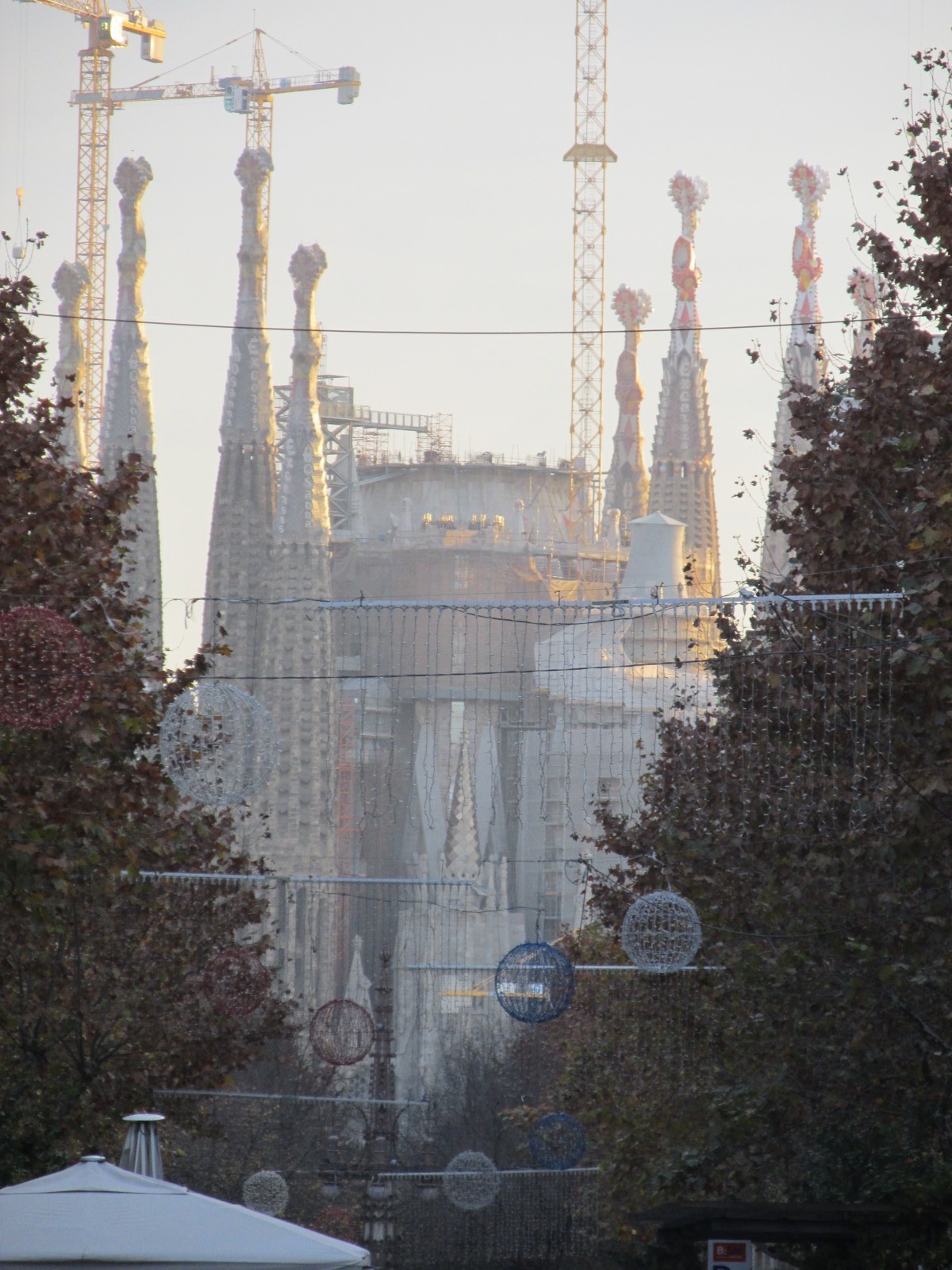When we start talking about the “feel” of a new worship or gathering space with a client, we invariably hear words like “warm”, “inviting” and “peaceful”. Part of our job is to translate those words into a built environment that serves the intended purpose while conveying those feelings. Feedback from our clients indicates that we have been successful in meeting those goals – particularly in spaces where we have used a good deal of wood as finish materials. It turns out that science is now proving and defining what many church designers have probably known for a long time – that when given a choice, many people express a preference for natural materials and other elements that incorporate or evoke nature.
The preference for nature has a name: biophilia, which literally means “love of life,” an affinity for living things and the natural world. The “biophilia effect” describes any of a number of positive impacts experienced when this affinity is evoked through a sensory experience of nature: sight, sound, smell, or feel. With architecture, the biophilia effect spans a broad range of elements that include positive personal responses to daylighting, views of nature, use of patterns, and use of natural materials such as wood products.
Gaudí and biophilia
Although some of this research may be new, the idea of basing building designs on nature is not new at all. One of the most steadfast proponents of this was the Catalan architect Antoni Gaudí. From his very earliest works, Gaudí used nature as a primary inspiration for his design work. Art critic and poet Juan-Eduardo Cirlot, in his Introduction to the architecture of Gaudí, writes that “Gaudí’s work shows an advance from traditional architecture towards new architectural structures based on mechanics and experiments such as the catenaries but, at the same time, and through the medieval and oriental tendencies in style, openly enters the world of natural morphology which does not copy but transforms and integrates it into an architectural or structural-ornamental factor.”
Anyone who has spent any time at all at Gaudí’s La Pedrera (Casa Milà) or Park Güell has seen firsthand how nature is a driving force in his designs. Tour guides at La Pedrera talk about the biophilia effect (though not in those exact terms) when they talk about the health benefits for those living in the apartments there. And Park Güell remains to this day a very popular spot for people seeking a return to nature and an escape from the insalubrious industrial city for which it was designed.
But nowhere is this biophilia more apparent than at the Sagrada Família. Over the 43 years during which he developed the design of this Expiatory Temple, Gaudí had the opportunity to research and develop new ways to integrate nature into his designs. For example, the arboreal balanced structure that determined the shapes, sizes and angles of the columns that support the aisles and roofs of the Sagrada Família, were based on a new calculation system that he developed while working on new church for the textile workers in Santa Coloma de Cervelló, which he began in 1898. Having spent ten years developing his new calculation system (a reverse model of hanging strips supporting appropriately weighted bags), he was able to prove that the system work through the construction of the crypt at Colònia Güell. Based on his success at Colònia Güell, he designed a more evolved structural system for the Sagrada Familia that consisted of structural trees, where the weight of the vaults and roofs is transferred directly to the foundation via columns with multiple branches. Each supporting structure has a suitable inclination so that each one can support a small part of the vault and roofs perfectly. These “trees” make their way upwards in search of light, which enters the building through multiple high windows and skylights. It is no surprise that, when visiting the Sagrada Família, most people walk around with their heads tilted back, taking in the “forest experience” Gaudí succeeded in creating within the basilica.
As one peers through this “forest”, one sees an extraordinary light filtering through the 60 freestanding stone columns. Described by their designer, artist Joan Vila Grau, as “symphonies of colors”, the abstract-design stained glass windows greatly contribute to creating a suitable ambiance for spiritual contemplation. Unlike more traditional stained glass, which tends to use the same palette of color throughout the windows, the colors of Vila Grau’s windows constantly change, based on the solar orientation and vertical location. The end result is nothing short of stunning. Not only does every window radiate light, regardless of the sun’s location, but they also wash the interior with magnificent, rich colors, further enhancing the light stone structural forest.
The Mystery of Creation
I have continued to read about and study the Sagrada Família since my return from Barcelona last December. I recently watched a film about it on Netflix called “Sagrada: The Mystery of Creation“. For me, the best part of this film was the interviews with the artists and architects that have been and continue to be involved in the completion of this magnificent structure. Although a number of new cathedrals have been built in recent years, the Sagrada Família is one of only a few major religious structures that were started more than one hundred years ago and are still under construction today. (The Cathedral of St. John the Divine in New York City, begun in 1892, is the only other one I am aware of.) I am quite certain that it would easily qualify as the world’s most visited construction site, as it is an active site with work continuing on both the interior and exterior as over 3,000,000 tourists a year pass through its doors. Most of the work you see now has been completed over the last 50 years, which means that many of those involved are still alive today. Those include chief architect Jordi Bonet i Armengol, who was entrusted with the building’s management between 1984 and 2012. Other architects and craftspeople whose parents had worked on the basilica were also interviewed. But the most interesting interviews with the two sculptors whose work adorn the Nativity and Passion facades, on opposite sides of the building.
The sculptors

Sculpture by Etsuro Sotoo
Of the six sculptors who contributed to the Nativity facade, only Japanese sculptor Etsuro Sotoo (b. 1953) is still alive today. Sotoo, who carved the singing and musical angels of the Nativity facade, as well as the leaves and the fruits of the large windows of the aisles (for which there were only remains of Gaudí’s models) spoke about how he worked to understand Gaudí’s vision for his carvings. He eventually came to see that to understand Gaudí, he had to “look where Gaudí looked”, rather than look at Gaudí. This realization led to him converting from Buddhism to Roman Catholicism.

Sculpture by Josep Maria Subirachs
The other sculptor who was interviewed, Josep Maria Subirachs, passed away a couple of years after the filmed interview. Subirachs was responsible for the entire sculptural group of the Passion facade, which departs from the overall “style” of the building. Subirachs spoke about how, as he was a modernist sculptor, he had to carve in his own style in order to be true to himself. Calling himself an atheist but a “cultural Christian”, he found his inspiration not in Gaudî but in his reading of the scriptures related to Christ’s passion, death & resurrection.
The opponents
Perhaps the most surprising thing about this film was the interview with the late British-born, Barcelona-adopted David Mackay. Mackay told the story of how, in 1965, a manifesto against the continuation of construction works was signed and published by notable Modernist architects, artists, and writers including Le Corbusier, Josep Lluis Sert, Bruno Zevi, Joan Miro, Antoni Tàpies, Ricardo Bofill, Camilo José Cela, Jaime Gil de Biedma, and (ironically) Josep Maria Subirachs. On the one hand, the signers argued against continuing construction on urban and aesthetic grounds derived from Modernism, and on the other, for leaving the building as it was at Gaudí’s death as a cenotaph for the architect. These objections dovetailed with general objections by the communist and atheist groups of Spain to the religious and decorative nature of such a prominent work. The most obvious effect of this letter was, again ironically, an enormous increase in donations to help complete the structure.
Although one of the instigators of the manifesto publicly changed his position in 2010, until a few years before his death, Mackay (who was one of the signers of the 1965 manifesto) continued to question how the Sagrada Família is being completed, questioning whether it is or is not “morally correct”. He questions whether the structural engineers are truly following Gaudí’s structural proposals. It is an interesting question, worth considering. Mackay’s firm was largely responsible for a major rebirth of Barcelona through their redevelopment of the industrialized harbor. He believed in contemporary planning principles and their benefits. But I feel as if he is missing a larger point in his criticisms of the current implementation of Gaudî’s vision of the Sagrada Família, which seems to have such a universal appeal. Of course it will never be as Gaudí would have finished it. But does that mean it should be as someone else would finish it? I can’t see how that would make the building any better.
The fans
Cited at the top of the list in a 2007-2008 survey about people’s most profound, lasting, and/or intense experiences of architecture, it is clear that visitors are relating to this structure in ways that they rarely relate to more modern structures. The question is why. Is it because of the biophilia effect? We know that Gaudí had a great respect for life and its creations. He did not see himself as a creative person at all. Rather, he claimed that God created and he just copied.
Patterns can evoke the biophilia effect. According to Nikos Salingaros, “much, if not all, of natural structure is fractal” (2012). His discussion of fractals does not demand a strict mathematical interpretation of fractal; infinite repetition isn’t necessary, only a scaled self-similar pattern. Salingaros posits that visual fractals in the environment mitigate physical stress and may even have a healing effect, based on other research. This is contrasted with the modernist ethic, which favors a stark minimalist or abstract look; Salingaros points out that a majority of people feel uncomfortable or stressed in such surroundings and argues for evidence-based design rather than “a largely mythical industrial efficiency.”
We know that Gaudí was fascinated with fractal structures in nature. Researchers Iasef Md Rian and Mario Sassone in their research paper “Tree-inspired dendriforms and fractal-like branching structures in architecture: A brief historical overview” said this about Gaudí’s design of the Sagrada Família:
He applied the concept of branching column for holding the canopy in a systematic way with the close study of structural forces and stresses (Saudi, 2002). He inclined the columns so they could put up better with the perpendicular pressures on their section by providing them a double turn helicoid shape (right turn and left turn), as seen in the branches and trunks of trees, thus creating a structure that is nowadays known as fractals (Gómez, 2002). Together with a modulation of the space which divides it into small, independent and self-supporting units, it creates a structure that perfectly supports the mechanical traction forces, thus fuses the constructional innovation with the esthetic originality. In this context, Gaudi once clarified, ‘my structural and aesthetic ideas have an ‘indisputable’ logic’ ( Martinell, 1951).
Completing the work
Gaudí not only knew that he would not finish the Sagrada Família in his lifetime; he also knew that technology would change over the many years of its construction. It is one of the reasons he made the radical choice to complete one facade first rather than build the basilica from the bottom up, as was typically done. Beside projecting that it would help the basilica attract donations, he realized that future technologies might make the construction of the rest of the basilica quicker and easier. He anticipated the use of reinforced concrete for portions of the building and left room for other innovations future generations might make.
But perhaps the main reason I disagree with the manifesto’s position relative to the completion of the Sagrada Família is that it is entirely inconsistent with the primary purpose of the Sagrada Familia. The idea of an expiatory temple (which is part of the official name of the Sagrada Família) is that it is built through endeavor, sacrifice and individual contributions to atone for personal and collective sins. In this way, people from all over the world, many of whom have remained anonymous, have contributed and continue to contribute to the construction. This would have been impossible if construction has been halted. Based on what I have seen of more modern religious buildings (and the controversy that usually surrounds them), I highly doubt that any other design could generate over 60,000,000 euros per year in donations. How often do you hear a tour guide of a building undergoing construction or renovation say, “We have more than enough money to finish the project – it’s just a matter of time now.”?
It is clear that people both within and outside Barcelona love the Sagrada Família. For many, visiting it is the highlight of their visit to this beautiful city. But even those who don’t love it understand what Gaudí was trying to accomplish: “With its avoidance of straight lines and right angles, and its tree-like columns, it embodies Gaudí’s belief that he should follow nature.” writes architecture critic Rowan Moore. While research into the biophilia effect is still in its early stages, it is a rapidly growing interdisciplinary field. Its results point toward myriad benefits to be gained from using biophilic principles in design of commercial and public projects, many of which have been used for decades already.
Thank you, Mr. Gaudí, for such an inspiring case study. I will surely be back to see it again and study it further.





